Days out in Lincoln
Lincoln what to see and do as a visitor
Recently, we explored Lincoln on a delightful day. We parked just north of the city at the free park-and-ride facility near Waitrose. From there, you have the option to either take a walk and catch a bus or simply walk into the city centre, which takes us about thirty minutes. While there are parking spaces closer to the city along Nettleham Road, they are limited.
Lincoln, situated in the county of Lincolnshire, England, is a historic city renowned for its rich history, stunning architecture, and lively culture. It’s widely regarded as one of the most attractive and fascinating cities in England.
Lincoln Cathedral
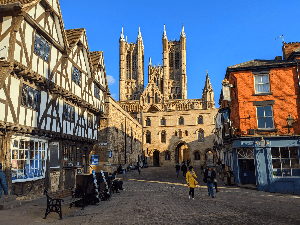
The first stop was to see the Cathedral. Lincoln Cathedral is a magnificent cathedral located in the city of Lincoln, Lincolnshire, England. The cathedral is one of the largest and most impressive examples of Gothic architecture in the country. It has a long and rich history dating back to the medieval period.
The cathedral was originally built in the 11th century. Since then it has undergone a number of expansions and renovations over several centuries. Some of the notable features of the cathedral include:
The Nave. The main body of the cathedral, with soaring Gothic arches and an impressive roof of timber and stone.
The Choir. The central area of the cathedral is where the choir sings and performs during services. The choir is surrounded by elaborate carvings and stained glass windows.
The West Front. The main entrance to the cathedral, with its massive Gothic portal and intricate carvings.
The Lincoln Imp. A famous carved stone figure that is one of the most recognisable symbols of the cathedral.
The Angel Choir. A stunning set of 14th-century choir stalls. They are considered to be the finest examples of medieval wood carving in England.
In addition to its architectural and historical significance, The Cathedral is also an active place of worship. It hosts a range of religious services and events throughout the year. The cathedral is open to visitors every day, and various guided tours, and exhibitions. The events on offer provide a fascinating insight into its rich history and cultural heritage.
Lincoln Castle
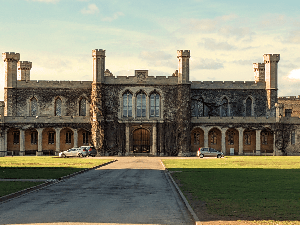
Just by The Cathedral is the castle. The castle was built in the 11th century by William the Conqueror. It has served as a prison, a court, and a military stronghold over the centuries. Today, Lincoln Castle is one of the city’s most popular tourist attractions. It is known for its well-preserved historical architecture and its panoramic views of the surrounding countryside.
The castle features a number of interesting structures and features, including:
The Norman Keep. A massive stone tower that dates back to the 11th century. It was used as a royal residence and a prison in later centuries.
The Victorian Prison. The 19th-century prison was used to house convicts until the early 20th century. Today, visitors can tour the prison cells and learn about the history of punishment and rehabilitation in England.
The Walls. The castle’s walls are among the best-preserved medieval walls in England. They provide a unique perspective on the history and architecture of the castle.
The Magna Carta. Kept in a building within the prison.
Lincoln Castle is also home to several cultural events and activities. This includes concerts, festivals, and educational programs. Whether you’re a history buff, an architecture enthusiast, or just simply looking for a fun day out, Lincoln Castle is well worth a visit.
Magna Carta and several copies
Originally, several copies of the Magna Carta were produced in 1215. However, only four of these copies have survived to the present day. These surviving copies are located in different places in the United Kingdom.
Firstly, the British Library in London is home to two copies of the Magna Carta. One is the original 1215 version, and the other is a later version from 1297, issued by King Edward I.
Additionally, Salisbury Cathedral in Salisbury, England, proudly houses another original 1215 copy of the Magna Carta, showcasing its historical significance.
Furthermore, within the prison at Lincoln Castle in Lincoln, England, rests the fourth surviving copy of the Magna Carta from 1215.
Each of these copies represents an original, handwritten document from 1215, and each is considered to be of significant historical and legal importance.
The Usher Gallery
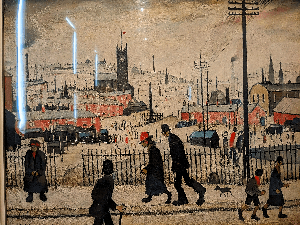
The Usher Gallery, located in the heart of Lincoln, is a testament to the city’s rich artistic heritage. It not only houses a diverse collection of fine and decorative arts but also hosts engaging temporary exhibitions. Positioned within the historic Usher Hall, originally designed as a concert hall in the early 20th century, the gallery offers visitors a deep cultural experience.
During our exploration, we discovered several captivating paintings, among them three masterpieces by the renowned artist L S Lowry. Notably, one of these paintings was commissioned by the respected British politician and diplomat, Sir Geoffrey de Freitas. This artwork depicted a panoramic view of the city of Lincoln, fulfilling Sir Geoffrey’s specific request to include the cathedral in the composition. Lowry’s skill brought this vision to life in 1950.
The Usher Gallery distinguishes itself as a unique venue for art appreciation, significantly enriching Lincoln’s cultural landscape. Beyond its exhibitions, the gallery actively involves the community by offering a variety of educational programs and events. This multifaceted approach positions the Usher Gallery as a valuable and vibrant resource for both local residents and visitors, enhancing their understanding and enjoyment of the arts.
The Collection
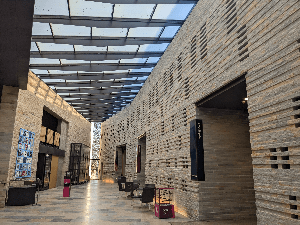
Just a short walk away from The Usher Gallery is The Collection, creating a seamless transition between these two cultural gems. This museum is exclusively dedicated to showcasing the archaeology and history of Lincolnshire, offering visitors a profound insight into the area’s rich cultural heritage.
The museum’s collections encompass a wide array of objects, ranging from prehistoric artefacts to contemporary items that illuminate the history and life of the local community. Among the captivating highlights are:
Roman and Medieval Finds: Delve into the past with artefacts like mosaics, pottery, and jewellery, providing a glimpse into ancient civilizations.
Everyday Life Exhibits: Explore items that narrate the story of everyday life in Lincolnshire, including clothing, tools, and household items, creating a vivid picture of the region’s history.
Local History Collections: Immerse yourself in the social and economic history of the area through documents, photographs, and objects that vividly portray the community’s evolution.
Natural World Artifacts: Witness the wonders of the natural world through a diverse array of fossils, minerals, and taxidermy specimens, showcasing the area’s unique biodiversity.
In addition to its permanent collections, The Collection regularly hosts temporary exhibitions, delving into various topics related to archaeology, history, and culture. Although the temporary exhibition was in the process of being dismantled during our visit, we look forward to experiencing the new exhibition later in the year, promising fresh insights and discoveries for future visitors.
Steep Hill
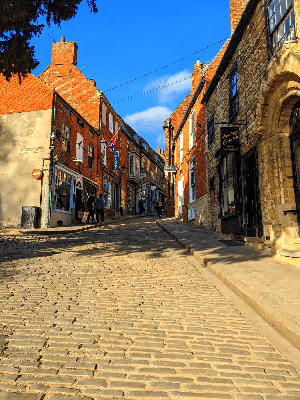
Nestled amidst cobbled streets, Steep Hill boasts a captivating blend of medieval and Georgian buildings, creating a unique atmosphere. Renowned as one of the most picturesque streets in England, it is a favourite spot for tourists and locals alike.
Along this charming thoroughfare, you’ll find a plethora of interesting shops, cafes, and pubs, each contributing to the street’s distinctive character. Steep Hill offers a window into the city’s essence, making it a must-visit destination. Notable features of Steep Hill encompass:
Medieval Buildings: Many structures along Steep Hill trace their origins back to the medieval period. Crafted from local stone and timber, these buildings showcase a mix of architectural styles, including Gothic and half-timbered designs.
Art Galleries: Steep Hill houses several art galleries exhibiting the creations of both local and national artists, adding a cultural dimension to the street.
Independent Shops: Steep Hill is renowned for its independent shops, where visitors can explore a diverse array of unique items. From antiques and vintage clothing to artisan foods and crafts, the offerings are eclectic and intriguing.
Views: Ascending Steep Hill rewards visitors with breathtaking views of the city and the surrounding countryside, creating a picturesque backdrop for a memorable experience.
Indeed, Steep Hill serves not only as an entrance to the city but also as a captivating starting point for an exploration that promises to be both delightful and enriching.
Lincoln City Centre
After walking down Steep Hill, we descended to the lower part of the city. Here, a vibrant array of shops, restaurants, and cafes awaited our exploration.
Adding to Lincoln’s picturesque charm, the River Witham gracefully flows through the city centre. Along its banks, a delightful blend of modern and traditional shops creates a charming atmosphere.
Two prominent shopping destinations beckon visitors in Lincoln. The first is the Cornhill Quarter, a historic area exuding charm and character. Here, an eclectic mix of independent and high-street shops invites exploration. The second is the Waterside Shopping Center, boasting a variety of high-street stores and a bustling food court.
For those seeking souvenirs, unique gifts, or simply desiring a dose of retail therapy, Lincoln offers abundant options to satisfy every shopper’s desire.




